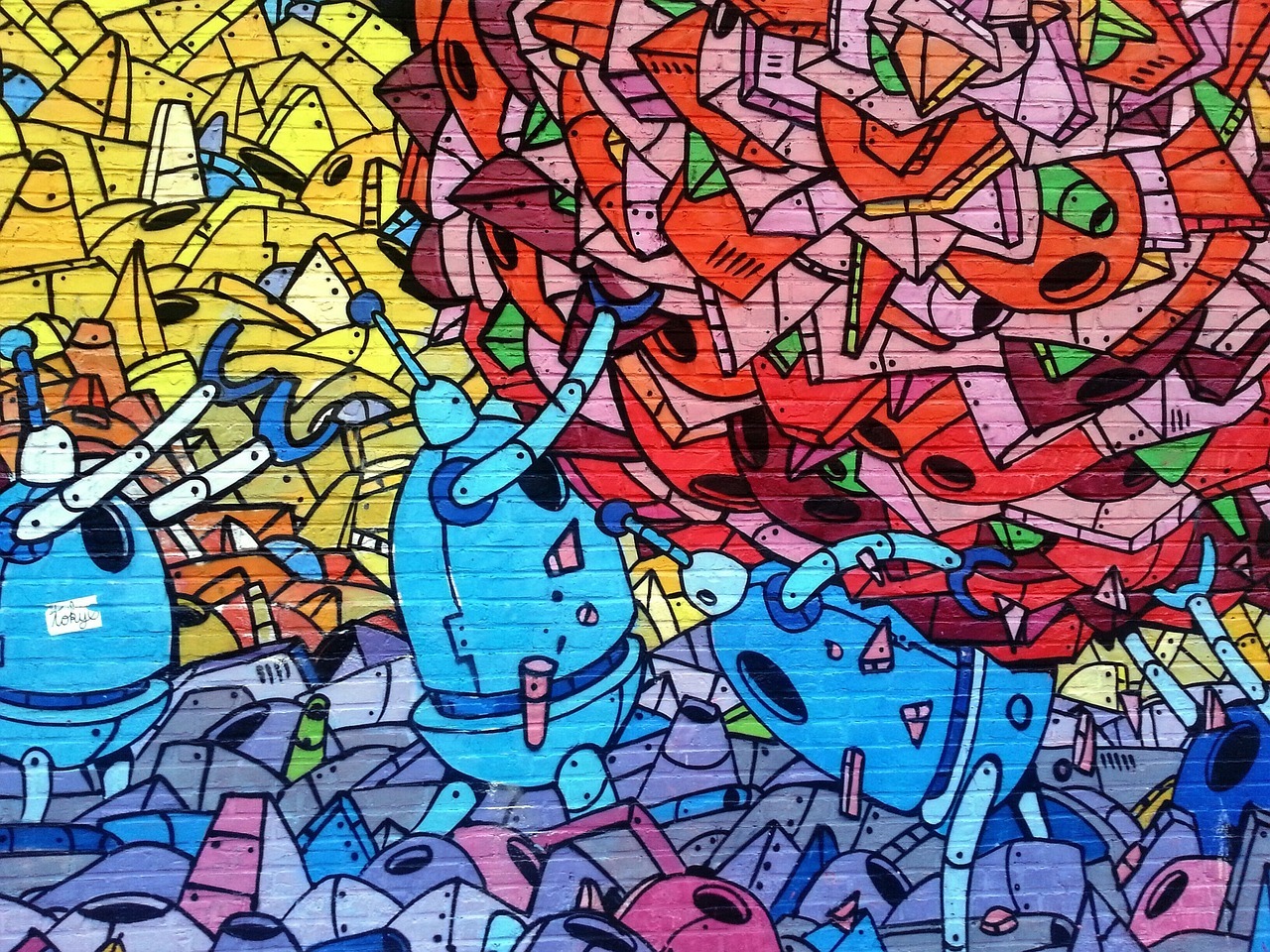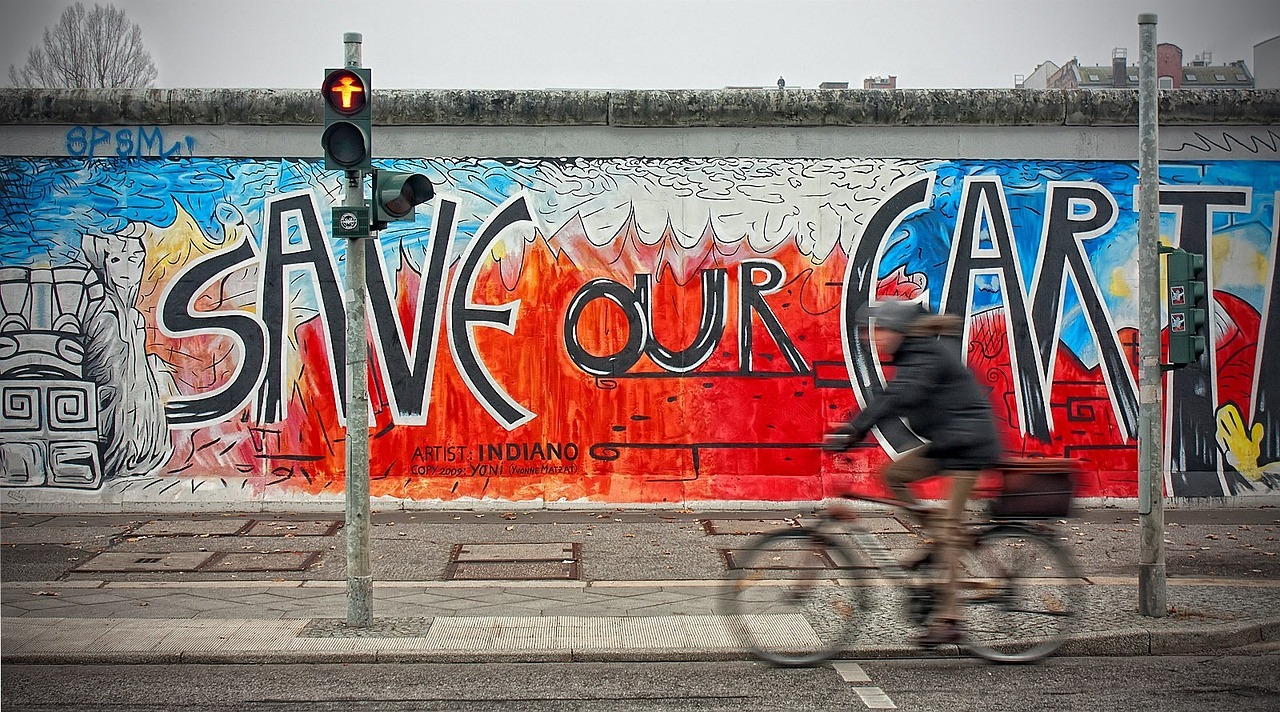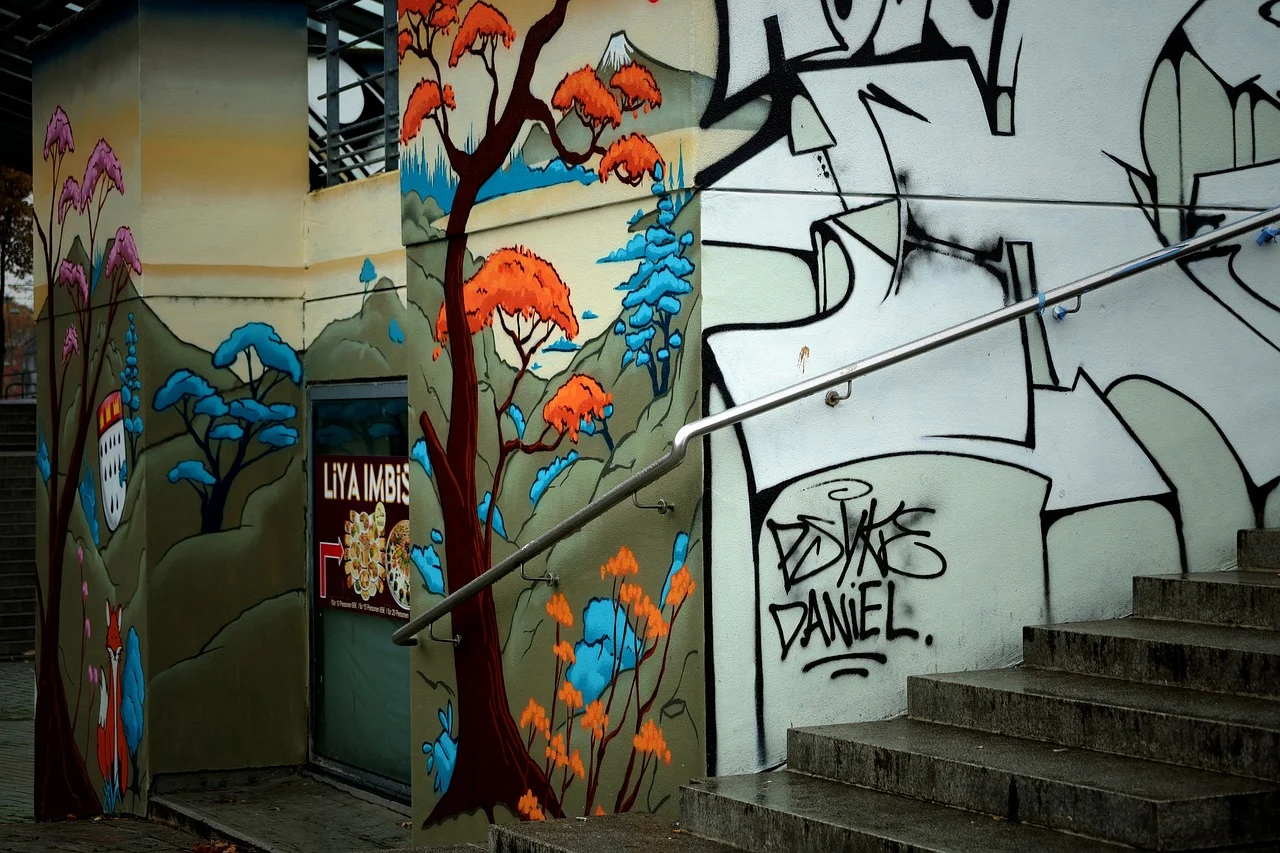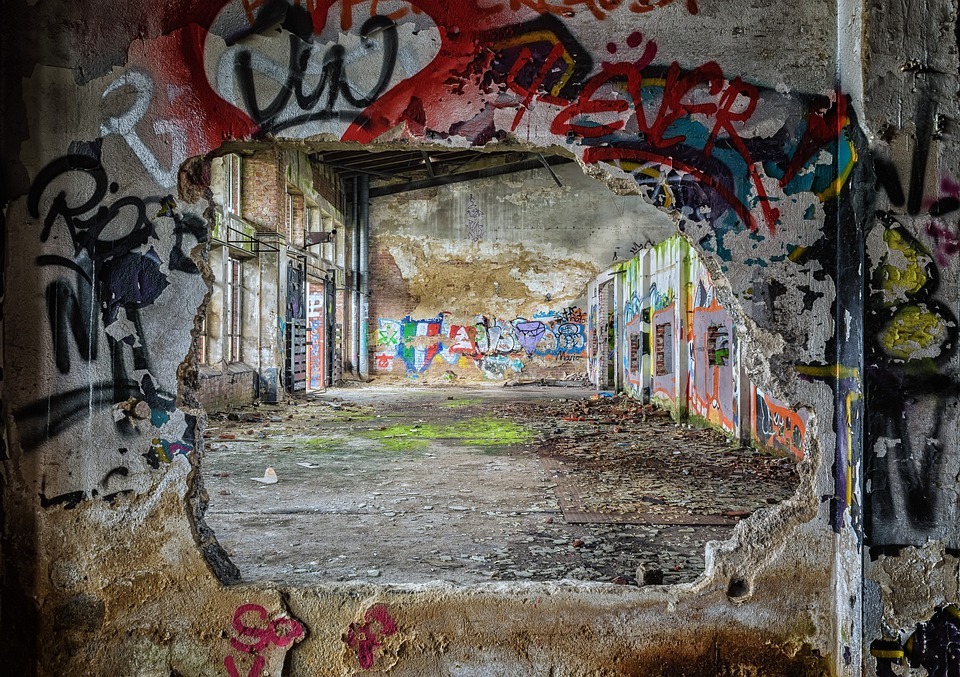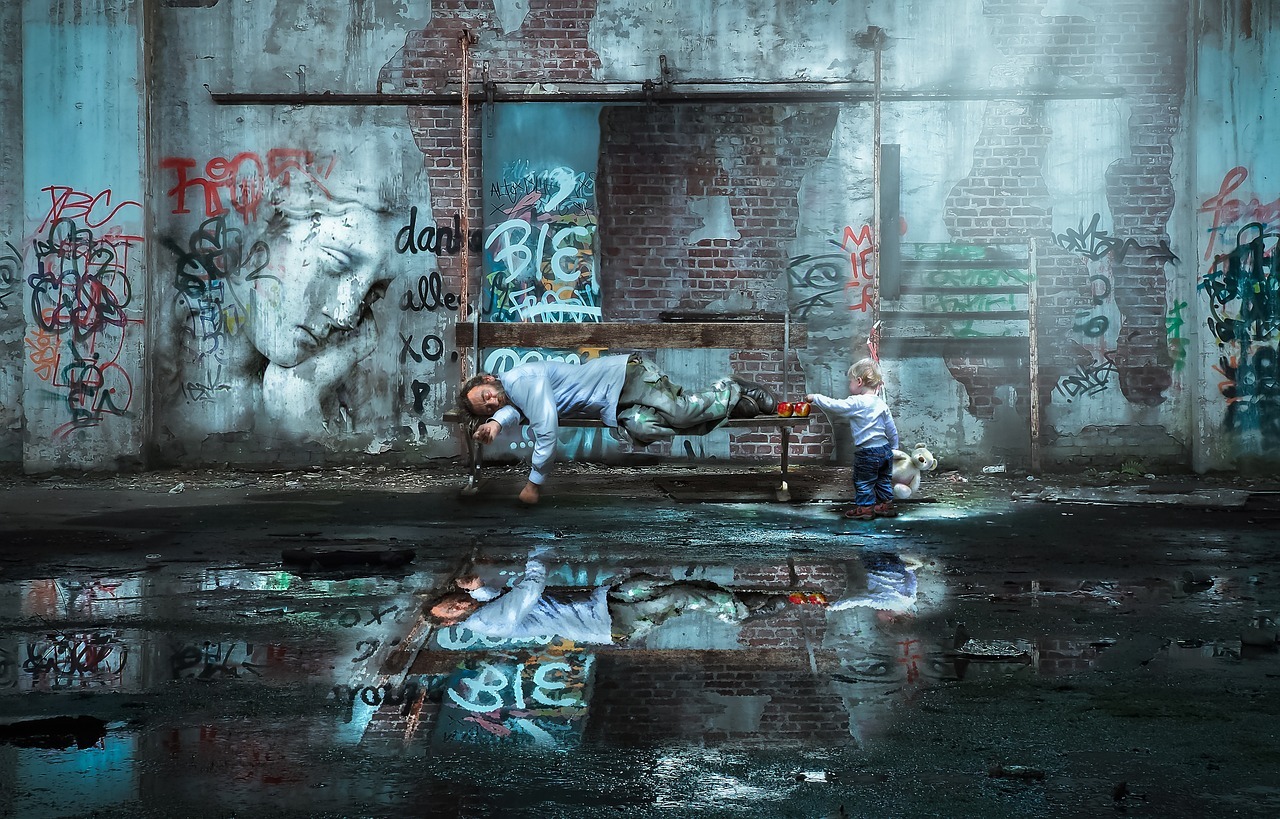Some folks say, “Heck yeah, graffiti is awesome!” They argue it adds flair to boring walls, gives a voice to the unheard, and brings communities together. But hold on, not everyone’s a fan. Some say graffiti is just vandalism, ruining property and making places look messy. They worry it’s unsafe and gives cities a bad rap.
So, which side is right? Well, that’s what we’re here to figure out. Join us as we dive into the debate on whether artistic graffiti is a cool way to express yourself in the city or if it’s just a big ol’ mess waiting to be cleaned up. Let’s get tagging, but with words this time!
Artistic Graffiti: The Favoring Points
Let’s begin by understanding the bright side of artistic graffiti and understand why it can be a good thing on a large scale.
Aesthetic Appeal
Artistic graffiti, when done with skill and intent, transforms dull cityscapes into vibrant galleries that tell stories and evoke emotions. Imagine a once-bland wall now adorned with a colorful mural depicting a local hero or a scene from history. These artworks not only beautify urban areas but also create a sense of place and identity for residents.
Studies have shown that well-executed graffiti can have a positive impact on the perception of a neighborhood. In a study conducted by the University of Warwick, 72% of respondents agreed that areas with street art felt more welcoming and friendly. This demonstrates the potential of graffiti to enhance the aesthetic appeal of urban spaces and improve the overall quality of life for residents.
Moreover, graffiti has become a tourist attraction in many cities around the world. Tourists flock to areas known for their street art, such as London’s Shoreditch or New York’s Bushwick, to experience the creativity and energy of these vibrant neighborhoods. This not only boosts local economies but also fosters a sense of pride among residents, who see their neighborhoods being celebrated for their artistic expression.
Graffiti has been a popular art style in the 1980s. Discover more art and design styles in our post about the 80s art and design movements that are uniquely influential.
Social Commentary
Graffiti has long been used as a powerful tool for social and political commentary, providing a voice to those who may not otherwise be heard. Artists use their work to raise awareness about issues such as inequality, injustice, and environmental degradation, sparking important conversations and inspiring change.
For example, the famous street artist Banksy is known for his thought-provoking pieces that challenge societal norms and highlight pressing issues. His artwork often critiques capitalism, war, and the treatment of refugees, prompting viewers to reflect on the world around them and consider alternative perspectives.
Graffiti also serves as a form of protest, allowing artists to express dissent and resistance in a visually compelling way. During the Arab Spring, graffiti played a crucial role in mobilizing dissent against oppressive regimes, with artists using their work to inspire hope and solidarity among protesters.
Community Engagement
One of the most compelling aspects of graffiti is its ability to engage communities and foster a sense of belonging. When artists transform neglected spaces into vibrant works of art, they not only beautify the area but also create a sense of ownership among residents.
Community-led graffiti projects, where residents are involved in the creation process, have been shown to strengthen social bonds and improve community cohesion. These projects empower residents to take pride in their neighborhoods and work together to create positive change.
Furthermore, graffiti can transform mundane spaces into hubs of activity and creativity. In cities like Philadelphia, community-led graffiti initiatives have turned abandoned lots into colorful parks and gathering spaces, revitalizing neighborhoods and attracting visitors.
Creative Outlet
Graffiti provides a unique and accessible outlet for creativity, especially for marginalized or disadvantaged individuals who may not have access to traditional art forms. Unlike expensive art supplies or formal art education, graffiti requires only a can of paint and a surface, making it an inclusive and egalitarian form of expression.
For many artists, graffiti is not just about creating pretty pictures; it’s about telling their stories and expressing their identities in a world that often marginalizes them. In this sense, graffiti becomes a form of empowerment, allowing artists to reclaim public spaces and assert their presence in society.
Moreover, graffiti can act as a gateway to other art forms, inspiring artists to explore more traditional mediums and pursue formal art education. Many renowned artists, such as Keith Haring and Jean-Michel Basquiat, started their careers in graffiti before transitioning to galleries and museums, demonstrating the potential of graffiti as a springboard for artistic success.
Artistic Graffiti: The Negative Aspects
Although there’s much good to it as we discussed above, there are certain drawbacks that can’t be overlooked either.
Property Damage
Graffiti, especially when done without permission, can cause significant property damage and financial burden to property owners and municipalities. The cost of graffiti removal and cleanup runs into millions of dollars annually worldwide. For instance, in the United States alone, it’s estimated that graffiti removal costs exceed $12 billion each year, according to a report by the Graffiti Hurts organization.
Furthermore, graffiti often leads to decreased property values in affected areas. Potential homebuyers and businesses may be deterred from investing in neighborhoods with a high prevalence of graffiti, fearing it reflects a lack of community pride and safety. Studies have shown that neighborhoods with visible graffiti experience a decline in property values by as much as 15%.
Additionally, graffiti can attract other forms of criminal activity, such as vandalism, theft, and drug-related crimes. A study conducted by the University of California, Los Angeles, found a correlation between graffiti and increased crime rates in urban areas, as graffiti-covered properties are perceived as neglected and easy targets for criminals.
Legality and Ethics
The legality of graffiti raises ethical questions regarding property rights, freedom of expression, and the rule of law. While some may view graffiti as a form of artistic expression, others see it as a violation of private property rights and an infringement on public space. Afterall, law is important in society in several ways!
Graffiti artists who operate without permission may justify their actions as a form of rebellion against societal norms or a means of reclaiming public space for marginalized communities. However, this argument overlooks the fact that graffiti often targets private property without the consent of owners, leading to legal disputes and costly cleanup efforts.
Moreover, graffiti can perpetuate a culture of lawlessness and disrespect for authority, undermining the social fabric of communities. When individuals disregard laws and regulations governing public spaces, it erodes trust and cooperation among residents, making it more difficult to address other pressing issues, such as crime and poverty.
Safety Concerns
Graffiti poses significant safety hazards in public spaces, ranging from obstructed visibility to increased risk of accidents and injuries. When graffiti covers signs, traffic signals, and other critical infrastructure, it impairs drivers’ ability to navigate safely, leading to traffic congestion and accidents.
Moreover, graffiti-covered surfaces can become slippery and unstable, especially in wet or icy conditions, posing a risk of slips, trips, and falls to pedestrians. In areas with high levels of graffiti, residents may avoid certain routes or public spaces altogether, fearing for their safety and well-being.
Furthermore, graffiti can obscure emergency exits, fire hydrants, and other lifesaving equipment, hindering first responders’ ability to intervene in emergencies. This not only endangers the lives of residents but also increases response times and exacerbates the impact of disasters, such as fires or natural disasters.
Negative Perception
Graffiti often perpetuates negative stereotypes about urban areas, portraying them as crime-ridden, chaotic, and unsightly. This can deter tourists, investors, and businesses from visiting or investing in affected neighborhoods, leading to economic stagnation and disinvestment.
Research has shown that perceptions of graffiti correlate with perceptions of safety and cleanliness in urban areas. A study conducted by the University of Amsterdam found that neighborhoods with high levels of graffiti were perceived as less safe and attractive by residents and visitors alike, contributing to a decline in property values and quality of life.
Furthermore, graffiti can deter economic development by driving away businesses and investment opportunities. Potential investors may be hesitant to commit resources to areas plagued by graffiti, fearing it reflects a lack of community pride and social cohesion.
Which Side Wins?
In balancing the positive and negative aspects of graffiti, it’s clear that finding a middle ground is crucial. While artistic graffiti can indeed add vibrancy and foster community engagement, the negative impacts on property, safety, and economic development cannot be ignored. A sustainable solution involves promoting alternative outlets for creativity, such as community art projects and designated graffiti zones, while also enforcing stricter regulations against illegal graffiti. Investing in education and outreach programs can help raise awareness about the consequences of graffiti vandalism and foster a sense of ownership and pride in public spaces.
By prioritizing sustainability and community well-being, we can create urban environments that are both vibrant and safe for all residents and visitors. Let’s work together to find creative solutions that celebrate artistic expression while respecting property rights and promoting a thriving, inclusive society.
Discover the authenticity behind artistic graffiti as a genuine urban expression! Interested in art movements challenging norms? Dive into our article, How Did the Dada Movement Challenge Conventional Art Norms? for an insightful exploration.
